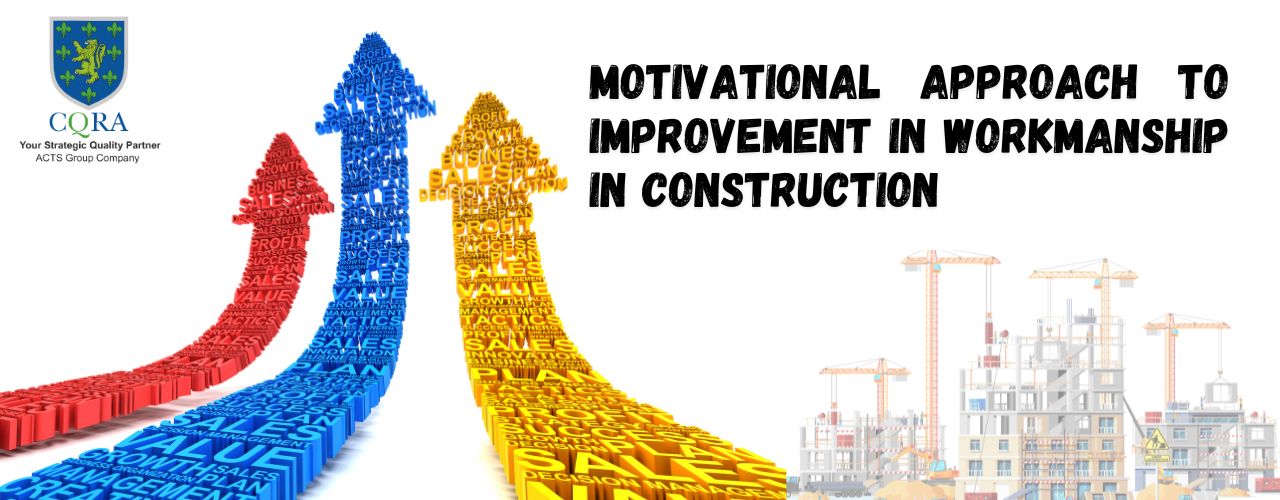Why is a motivational approach to improvement in workmanship necessary in the construction industry?
Because when you invest in the overall development of your workforce, be it civil engineers and project managers, technical workers like plumbers, masons, electricians or the general labor force, they too respond positively and in-turn are invested in your project. The result is a positively charged workplace that scores high on the health, environment and safety (HSE) aspects.
Unskilled Workforce – A Major Concern

- 71 million of India’s workforce is estimated to be employed in the construction sector.
- But 81% of this workforce is unskilled.
- Only 19% i.e. 1.3 million of the workforce in the real estate sector are skilled employees.
- Out of the 71 million, 4.4 million are core skilled employees like engineers, technicians, etc, and 6.9 million are vocationally trained employees.
Source – Skilled Employment in Construction Sector in India, Report by RICS & Knight Frank Report 2023

At just 19%, this abysmal number of unskilled workforce that the country has is an alarming statistic. Such a large pool of untrained labor gives rise to other issues at the construction site – they are less motivated in their jobs, not quality conscious, work only for the daily wages and have a lack of safety and environment concerns, all this apart from a complete ignorance of best practices in construction. In such a scenario motivating this workforce that is ultimately employed across various building and infrastructure companies across the country becomes a challenge for their management.
“When people are financially invested, they want a return. When people are emotionally invested, they want to contribute.“ — Simon Sinek, inspirational speaker.

Due to the ever expanding real estate and infrastructure needs, the demand for skilled employees will continue to rise. Developers, construction companies and contractors will have to find novel ways to connect with the workforce at all levels so that company values resonate with them.
We at CQRA have are here to help you in your quest to have a motivated and skilled workforce. Here’s how –
TRAINING
Ideally skilled manpower generation must begin from the top that is with government initiatives and setting up a large number of vocational skills training institutes. The current efforts are clearly not enough. To tackle this developer groups can come together to develop skill training programs supported by Corporate Social Responsibility (CSR) funds. Investing in workforce training can pay rich dividends when it comes to achieving good workmanship in construction.
It is crucial to educate workers about the value of mockups on a construction site in order to guarantee that exacting standards and minute details are met. Before complex design features are executed on a bigger scale, workers can fully grasp and recreate them using mockups, which are useful visual aids. By building these mockups, employees can see directly how every detail should seem and work, which lowers the possibility of mistakes during real development. In addition to improving the workers’ abilities, this practical method of instruction guarantees that all project components meet the strictest requirements. In the end, employing mockups as a teaching tool promotes a deeper comprehension of the project’s specifications, producing work of a higher caliber.
SKILLS AND SAFETY EDUCATION
Apart from their jobs, educating them regarding going about their work in a safe manner, following the safety protocols, providing specialized training for specific construction site hazards and ensuring certifications are sure ways of showing your commitment to the workers’ development. Contractors should abstain from a ‘Hire and Fire’ approach towards workers and instead think of they can be involved and invested in the project.
MONETARY BENEFITS
Developers and contractors cannot achieve exemplary quality in workmanship just by imparting training and ensuring safe work conditions. Going beyond this, good performance must be incentivized. For workers who are migrants, hailing from all corners of the country in a new place, quality of the construction is least of their concerns. Offering monetary benefits for superior skills is a sure shot way to encourage and cultivate a culture of high quality.
TWO WAY COMMUNICATION
Ensuring an open environment at the work place that encourages frank communication between the employees is the first step to ironing out staff issues at the site. Communication translating into positive action and collaboration is what the management must aim for, especially when it comes to fostering a culture of quality and safety.
RECOGNITION AND REWARDS
Appreciating good performances by way of rewarding individuals and teams goes a long way in positively enforcing and prioritizing quality work at the construction site. When an employee is feted for their work in a ceremonious manner by their seniors and in front of their co-workers, this motivates them immensely.

